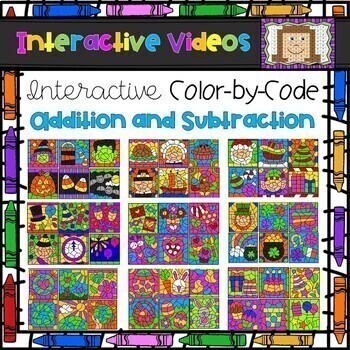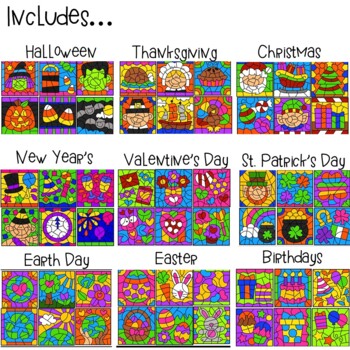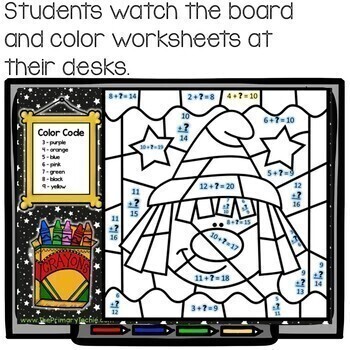Color Code Interactive Videos - Addition and Subtraction Holiday Bundle
The Primary Techie
17.4k Followers
Grade Levels
1st - 2nd
Subjects
Resource Type
Standards
CCSS1.OA.B.3
CCSS1.OA.B.4
CCSS1.OA.C.6
CCSS1.OA.D.7
CCSS1.OA.D.8
Formats Included
- Zip
Pages
56 videos
The Primary Techie
17.4k Followers
Products in this Bundle (9)
showing 1-5 of 9 products
Description
These videos are engaging and fun! Each one runs for about 30 minutes! Use this time to keep your students engaged while you re-teach small groups or test students one-on-one. These are also wonderful resources for subs!
This bundle includes 54 videos focusing on addition and subtraction facts. Holidays include Halloween, Thanksgiving, Christmas, New Year's, Valentine's Day, St. Patrick's Day, Earth Day, Easter, and Birthdays. Each set includes two addition videos, two subtraction videos, and two missing addend videos.
Due to the large file size, this download includes a link to access the files via Google Drive.
Total Pages
56 videos
Answer Key
N/A
Teaching Duration
N/A
Report this resource to TPT
Reported resources will be reviewed by our team. Report this resource to let us know if this resource violates TPT’s content guidelines.
Standards
to see state-specific standards (only available in the US).
CCSS1.OA.B.3
Apply properties of operations as strategies to add and subtract. If 8 + 3 = 11 is known, then 3 + 8 = 11 is also known. (Commutative property of addition.) To add 2 + 6 + 4, the second two numbers can be added to make a ten, so 2 + 6 + 4 = 2 + 10 = 12. (Associative property of addition.)
CCSS1.OA.B.4
Understand subtraction as an unknown-addend problem. For example, subtract 10 – 8 by finding the number that makes 10 when added to 8.
CCSS1.OA.C.6
Add and subtract within 20, demonstrating fluency for addition and subtraction within 10. Use strategies such as counting on; making ten (e.g., 8 + 6 = 8 + 2 + 4 = 10 + 4 = 14); decomposing a number leading to a ten (e.g., 13 - 4 = 13 - 3 - 1 = 10 - 1 = 9); using the relationship between addition and subtraction (e.g., knowing that 8 + 4 = 12, one knows 12 - 8 = 4); and creating equivalent but easier or known sums (e.g., adding 6 + 7 by creating the known equivalent 6 + 6 + 1 = 12 + 1 = 13).
CCSS1.OA.D.7
Understand the meaning of the equal sign, and determine if equations involving addition and subtraction are true or false. For example, which of the following equations are true and which are false? 6 = 6, 7 = 8 - 1, 5 + 2 = 2 + 5, 4 + 1 = 5 + 2.
CCSS1.OA.D.8
Determine the unknown whole number in an addition or subtraction equation relating three whole numbers. For example, determine the unknown number that makes the equation true in each of the equations 8 + ? = 11, 5 = ▯ - 3, 6 + 6 = ▯.





